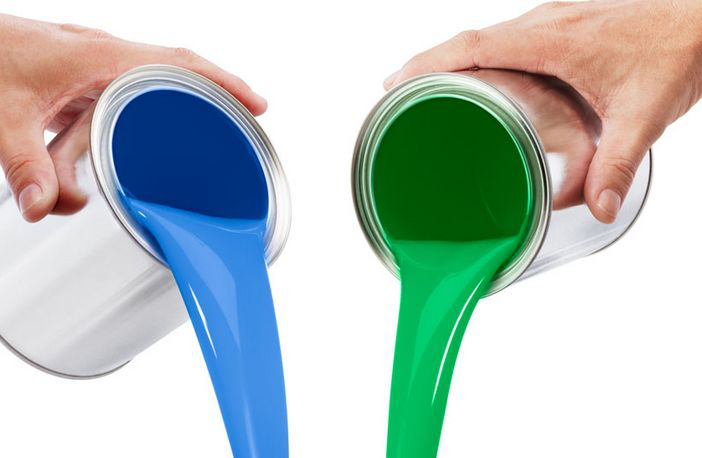Graphene materials have shown their unique functions and functions in the fields of electronics, optics, magnetism, biology, sensors, energy storage, and catalysis. Its outstanding physical and chemical properties have also attracted the attention of technical experts, universities and research institutes in the field of coatings to the application of graphene materials in coatings, and conducted in-depth systematic research jobs. NAPO Advanced Materials will introduce the advanced application of graphene in heavy-duty anti-corrosive coatings from the following aspects.
With a large amount of oxygen-containing groups contained in functionalized graphene, it has strong binding ability with resin and polymer materials, and is suitable as a reinforcing material or a functionalized material. At present, most of the application methods of graphene are to add graphene as a functional filler, and a key problem is how to solve the problem of dispersion stability of graphene, and it is necessary to modify graphene.

The surface of chemically modified graphene and graphene oxide has abundant functional groups (hydroxyl, carboxyl, epoxy), which can achieve nano-scale dispersion in the polymer body, thereby effectively imparting and improving the performance of the polymer. Another application mode of graphene is to prepare graphene composite materials by organic/inorganic composite method to achieve stable dispersion of graphene and play its special functions.
The multilayer graphene was transferred to the surface of the metallic nickel by a mechanical method, and then the corrosion inhibition was observed by an electrochemical method. The results show that the corrosion rate of nickel with multi-layer graphene coating is 20 times slower than that of bare nickel, while the metal nickel with four-layer metal graphene coating is four times slower than bare nickel. The graphene coating is quite thin, but its corrosion resistance is at least comparable to that of five layers of conventional organic coatings. Based on this practical basis, studying the protective effect of graphene on metal corrosion has become an important direction in the research and development of coatings.
Graphene was used as a filler and filled into an epoxy resin coating. The anti-corrosive properties of the coating were investigated by coating adhesion test, immersion test, and Tafel polarization curve test. The results show that the addition of graphene effectively improves the corrosion resistance of the coating. The good corrosion resistance of graphene mainly comes from its excellent electrical conductivity, unique two-dimensional sheet structure, and its surface hydrophobic properties.
After adding graphene to coating systems such as conductive coatings, anti-corrosive coatings, and flame retardant coatings, the overall performance of coatings is greatly improved. If the required coating thickness is reduced, the coating adhesion and wear resistance are increased, especially performed outstanding in conductive coatings and epoxy zinc coating (resistance to salt spray up to 2500h) and waterborne anti-corrosion coating (more than 30% salt spray resistance improved).
The graphene/silicone-acrylic emulsion composite was prepared by solution ultrasonic method. The test results show that the composite has a lower percolation threshold (about 0.5%, mass fraction, the same below). When the amount of graphene is less than 0.9%, the conductive network structure of the composite material has been basically constructed. The volume resistance has been stabilized below 103 Ω·cm after a sharp drop of 9 to 11 orders of magnitude, and the conductivity has been significantly improved. When the dosage of graphene is 0.7%, the dispersion state in the polymer matrix is the best. Compared with the silicone-acrylic emulsion coating without graphene, the tensile strength of the composite is increased by 15.5%, and the elongation at break is reduced by 3.6. %, the water resistance is increased by 14%, the thermal decomposition temperature at 5% weight loss is increased by 43 ° C, and the corrosion resistance is also greatly improved.
The graphene prepared by chemical redox method still contains a small amount of unreduced hydroxyl and carboxyl groups at the edge of the sheet, which makes the graphene have certain physical and chemical activities and can give the composite some good properties, such as dispersion(hydrogen bonding), adhesion, etc. At the same time, it also has the role of participating in chemical cross-linking, increasing the cross-linking density and reinforcing the mechanical properties of the coating film.
However, when the amount of graphene is too large, self-agglomeration occurs, which destroys the uniformity and compactness of dispersion, and its electrical properties and mechanical properties (agglomeration of graphene, stress concentration inside the coating film) and corrosion resistance (conductivity network structure is affected, forming point contact or line contact) are falling. Graphene itself has hydrophobicity and oiliness, and its sheet structure has a "maze" effect, which can hinder the penetration of water, corrosive ions and the so on into the metal substrate, delay the corrosion rate of the metal substrate, and further protect the substrate from corrosion effect.